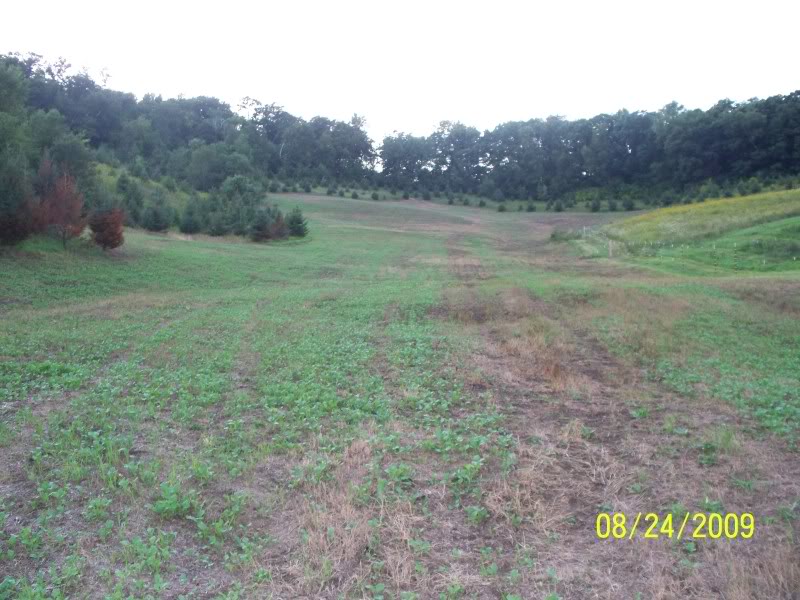When I get time I will try to post more on this topic on the tree planting thread. We have tons of thick brushy areas and overgrown CRP on this farm which is excellent cover and bedding areas. Also, we have planted thousands and thousands of white spruce with close to 100% success rate, how did you guess dbltree??
They grow like weeds here, no site prep no nothing, just plant and forget them. I was suprised to hear that you have so much trouble with spruce in your area, but then again maybe not. I have hunted Iowa and only wish Wisconsin had the hunting season structure Iowa does to produce the great numbers of mature bucks in your state! I wish we had that problem with so many big bucks rubbing all our trees! We actuallly have more trouble with red cedar that grows so well for you, they love to browse the red cedar. Don't they browse the heck out of it there?
I guess it doesnt' help that we have a lot of deer winter on our area with the food plots and great cover, they really browse the small red cedars to death. I will try to get more pictures sometime (maybe for the tree planting thread too), but I will send you one that I already have that shows the area I was talking about frost seeding CIR this winter. It is surrounded on 3 sides by white spruce (which you can see in the picture) with thick brush growing in between. I posted this earlier last fall, but you can see the rape coming up in that photo which I drop seeded after spraying the field with glyphosate. The rape go anywhere from four inches to over knee high by late fall and the deer have been pounding it. They should have it pretty well cleaned up in another month or two and then I could frost seed the CIR if I decide to do that. On the fourth side you will see an elelctric fence. I will try to post this on the tree planting thread too, with more pictures and more information.
I know someone recently asked about electric fencing for keeping deer out of tree plantings on that thread. We have 8.1 acres enclosed with a 8 strand high tensile 7,000+ volt electric fence. We have 2500+ white cedars within the enclosure. It keeps 90% of the deer out, so hopefully in 10 years or so when the cedar are big enough we can take the fence down and let the deer enjoy them! The absolutely love white cedar esp. from late fall through early spring for browse and it makes great cover and bedding too! If you have any deer at all, you must somehow keep them off or no chance they will survive.
Anyway, would it be better to plant this field with CIR or more trees, shrubbs, etc. I want the best bedding area we can have. Switchgrass or trees/shrubs?
thanks
















